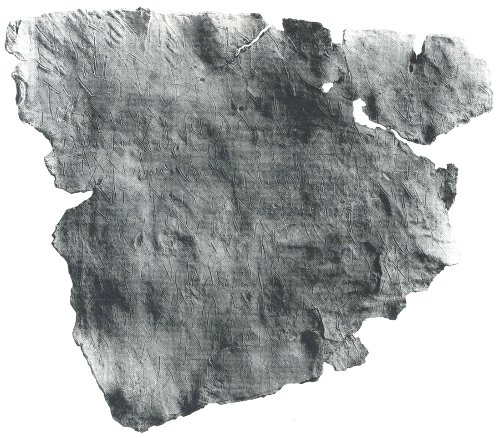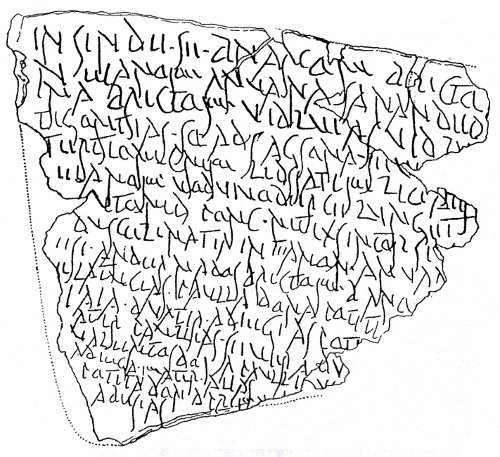Gaulish - RIG L-98
L’Hospitalet-du-Larzac - face 1a

The lead-tablet from Larzac contains one of the longest of the Gaulish inscriptions. It is two pieces, each written on both sides, and seems to be a magical inscription about women casting spells, although much of it is extremely difficult to interpret. Presented here is just one of the four sides of the inscription. It is scratched onto thin sheets of lead in a cursive Latin script.
- insinde se bnanom bricto[m i
- n eianom anuana sanander[
- na brictom uidluias uidlu[
- tigontias so adsagona seue[rim
- tertionicnim lidssatim liciatim
- eianom uoduiuoderce lunget
- ..utonid ponc nitixsintor si[es
- duscelinatia ineianom anuan[a
- esi andernados brictom bano[na
- flatucias paulla dona potiti[us
- iaia duxtir adiegias poti[ta m
- ater paullias seuera du[xtir
- ualentos dona paullius
- adiega matir aiias
- potita dona prim[ius
- abesias
No translation is offered as too much is uncertain, but we can pick out some interesting words and phrases (for attempts at translation, see the references in Lambert’s work noted below).
Bnanom may be the genitive plural of the word for ‘woman’ (cf. Old Irish ben ‘woman’ (genitive singular mná) and bricto[m] a word for a spell (cf. Old Irish bricht ‘spell’). Anuana is probably the plural noun ‘names’; cf. Old Irish ainm, Welsh enw ‘name’. The latter part of this side of the inscription seems to be a list of the women involved and we have surviving the Gaulish words for both ‘mother’ matir and daughter duxtir, and this is confirmed by the fact that we can see pairs of names, thus adiega matir aiias (l. 14) ‘Adiega mother of Aiia’ beside (l. 11) aia duxtir adiegias ‘Aia daughter of Adiega’.
P-Y. Lambert, Recueil des inscriptions gauloises: II.2 Textes gallo-latins sur instrumentum (Paris, 2002), L-98, pp. 251–66


